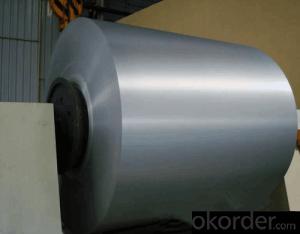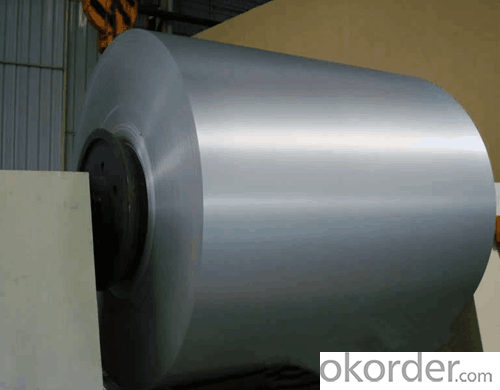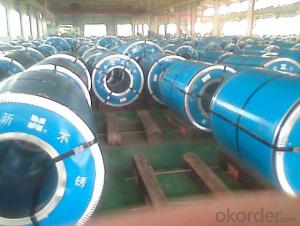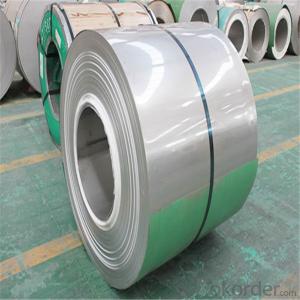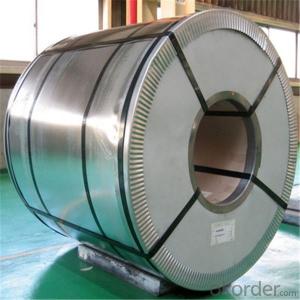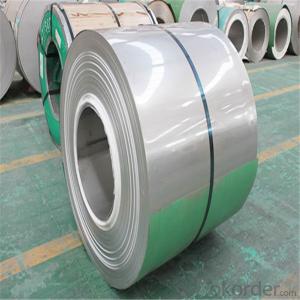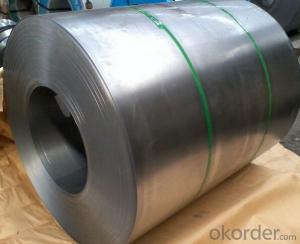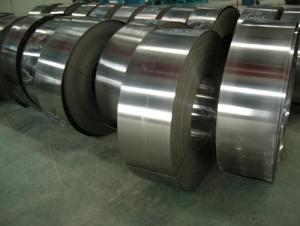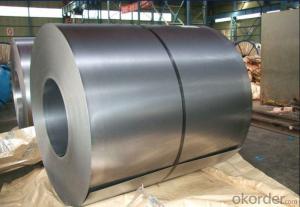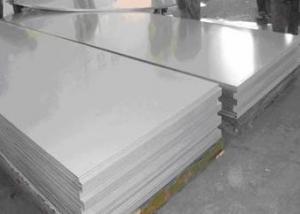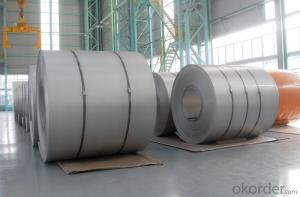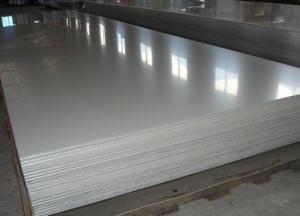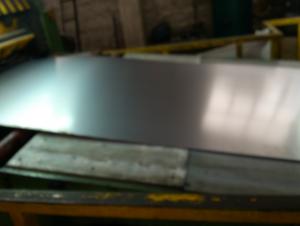316L STAINLESS STEEL COILMADE in WUXI GOOD QUALITY AND CHEAP
- Loading Port:
- Shanghai
- Payment Terms:
- TT OR LC
- Min Order Qty:
- 2 m.t.
- Supply Capability:
- 200 m.t./month
OKorder Service Pledge
OKorder Financial Service
You Might Also Like
1,Description of the 316 stainless steel coil
316L stainless Steel adds Mo (2-3%), so it has excellent corrosion resistance and high temperature strength; SUS316L carbon content is lower than SUS316, therefore, the resistance to intergranular corrosion resistance is better than SUS316: high temperature creep strength is high. It can be used in harsh conditions.good strain hardening and non-magnetic.
2,Applications of Stainless Steel Coils 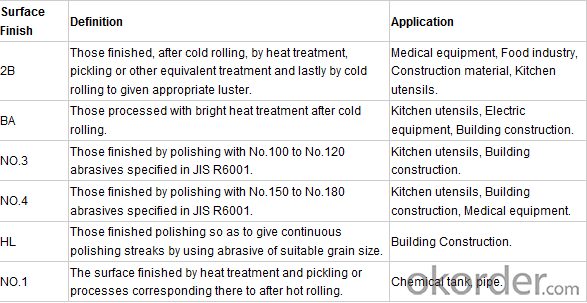
3,related products show
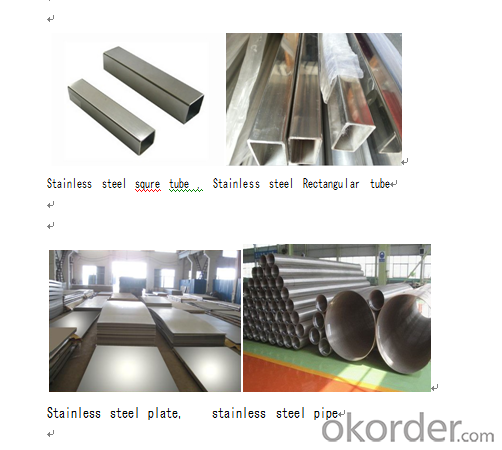
4,Specification of the 316L stainless steel coil.
1. Our company has been dedicated to producing stainless steel seamless pipe since 2003, owning complete producing technology and abundant managing experience.
2. The raw material such as mother tube, round bar we use is from Chinese biggest and well-known steel mill: Walsin Steel and Yongxing Steel.
3. We have advanced NDT equipments for the tests such as Eddy Current test, Ultrasonic test, Hydraulic test and so on.
4. We have ISO 9001 and PED certificate, and the Third Party Inspection Certificates such as TUV, BV, Lloyd’s, SGS, etc, also can be provided according to customers’ requirements,
5. Wooden case package which is strong and suitable for sea transportation is our main method to pack the pipes. And the economical packing method such as packed in bundles is also welcomed by some customers.
6. The tolerance control we use is D4/T4 (+/-0.1mm) on both inside and outside Diameter and Wall Thickness, which is much higher than international standard ASTM, DIN.
7. The surface condition is one of our main advantages: in order to meet different requirements for surface condition, we have annealing and pickling surface, bright annealing surface, OD polished surface, OD & ID polished surface etc.
8. In order to keep the inside surface of pipe clean and make it free from deburring, our company develops the unique and special technology --- Sponge Washing with high pressure.
9. We have complete after-sale service to deal with the problems in time.
5,FAQ
1,How do you guarantee the quality of your product?
A: Every process will be checked by responsible QC which insures every product's quality.
2,How much is your daily output?
We can rate our daily output at about 200Ton-300Ton.
- Q: Can stainless steel strips be used for architectural signage?
- Yes, stainless steel strips can be used for architectural signage. Stainless steel is a durable material that is resistant to corrosion, making it suitable for outdoor applications. Its sleek and modern appearance also adds an aesthetic appeal to architectural signage.
- Q: How do stainless steel strips resist embrittlement in high-temperature applications?
- The exceptional resistance to embrittlement in high-temperature applications is a well-known characteristic of stainless steel strips. This resistance can primarily be attributed to the unique composition and microstructure of stainless steel. Stainless steel, being an alloy, contains a significant amount of chromium, typically ranging from 10-30%. The presence of chromium in stainless steel plays a crucial role in its ability to resist embrittlement. One of the reasons for this is that chromium forms a passive oxide layer on the surface of stainless steel, known as chromium oxide or Cr2O3. This oxide layer acts as a protective barrier, preventing the diffusion of harmful elements and reducing the vulnerability to embrittlement. In high-temperature environments, stainless steel strips are able to retain their resistance to embrittlement due to the stability of the chromium oxide layer. Even at elevated temperatures, this layer remains intact, providing a continuous barrier against the corrosive and embrittling effects of the surrounding environment. Moreover, stainless steel also contains other alloying elements such as nickel and molybdenum, which contribute to its strength at high temperatures and its resistance to embrittlement. These elements enhance the stability of the microstructure, preventing the formation of brittle phases and maintaining the ductility of the stainless steel strips. The fine-grained microstructure of stainless steel is another crucial factor in its resistance to embrittlement. The presence of fine grains inhibits the propagation of cracks and reduces overall susceptibility to fracture, even at high temperatures. Additionally, the presence of carbides, nitrides, or other precipitates within the stainless steel matrix can help immobilize dislocations and prevent their movement, further enhancing the resistance to embrittlement. In conclusion, the resistance of stainless steel strips to embrittlement in high-temperature applications is attributed to the protective chromium oxide layer, the presence of alloying elements, the stability of the microstructure, and the inhibiting effects of precipitates. These factors work together to ensure that stainless steel maintains its strength, ductility, and resistance to fracture, even under extreme temperature conditions.
- Q: Can stainless steel strips be used in jewelry making?
- Yes, stainless steel strips can be used in jewelry making. Stainless steel is a durable and hypoallergenic material that can be shaped and polished to create beautiful and long-lasting jewelry pieces. It is commonly used in the production of rings, bracelets, necklaces, and other accessories.
- Q: What is the impact resistance of stainless steel strips?
- Stainless steel strips possess exceptional impact resistance as a result of their intrinsic characteristics and distinctive production method. The remarkable impact resistance of stainless steel strips stems primarily from their elevated tensile strength and toughness. Stainless steel, an amalgam comprised of iron, chromium, and additional elements such as nickel, molybdenum, and manganese, acquires enhanced mechanical properties, including substantial strength and ductility, from these constituents. Consequently, stainless steel strips can endure external forces and impacts without succumbing to deformation or breakage. Furthermore, the manufacturing process of stainless steel strips entails subjecting them to a technique known as cold rolling. During this procedure, the stainless steel is passed through a sequence of rollers at low temperatures, thereby augmenting its strength and hardness. This subsequent step further bolsters the impact resistance capabilities of stainless steel strips. The impressive impact resistance demonstrated by stainless steel strips renders them highly suitable for a diverse range of applications requiring durability and resilience against external forces. Industries such as automotive, construction, aerospace, and marine extensively utilize these strips, as they are frequently exposed to harsh conditions and potential impacts. In conclusion, the combination of high tensile strength, toughness, and the cold rolling process during production ensures that stainless steel strips exhibit exceptional impact resistance. These qualities make stainless steel strips an exceedingly reliable choice for applications necessitating resilience against external forces and impacts.
- Q: Can stainless steel strips be used in the automotive industry?
- The automotive industry can make use of stainless steel strips, which are versatile and durable. Stainless steel is a material that offers numerous advantages for automotive applications. It possesses excellent corrosion resistance, making it capable of withstanding harsh environmental conditions and exposure to road salts or chemicals. Moreover, stainless steel strips are resistant to heat and can endure high temperatures, making them suitable for various automotive components like exhaust systems and engine parts. Additionally, they possess high strength and can provide structural support and reinforcement for automotive frames and body panels. Furthermore, they can be utilized for decorative purposes, enhancing the aesthetic appeal of vehicles. All in all, stainless steel strips are a dependable and valuable material choice for the automotive industry.
- Q: How wide are stainless steel strips typically available?
- A variety of widths are typically offered for stainless steel strips, ranging from as narrow as 0.25 inches (6.35 mm) to as wide as 24 inches (609.6 mm) or even wider. The supplier or manufacturer and the intended application of the stainless steel strips may influence the specific width options. Nevertheless, it is crucial to acknowledge that these width ranges are commonly available, and stainless steel strips can be tailored to meet specific width requirements if necessary.
- Q: Are 111 stainless steel strips suitable for high-temperature furnaces?
- No, 111 stainless steel strips are not suitable for high-temperature furnaces.
- Q: How are stainless steel strips different from carbon steel strips?
- Stainless steel strips and carbon steel strips differ in various aspects, making them suitable for different applications. The main distinction lies in their composition and the presence of additional elements. Stainless steel strips are primarily composed of iron and chromium, with the addition of other elements such as nickel, molybdenum, and manganese. This composition gives stainless steel its corrosion-resistant properties, making it ideal for applications where exposure to moisture or chemicals is expected. Additionally, stainless steel strips possess excellent heat resistance, making them suitable for high-temperature environments. On the other hand, carbon steel strips consist mainly of iron and carbon, with minimal amounts of other elements. Carbon steel is known for its strength and durability, making it suitable for applications that require high tensile strength and hardness. However, carbon steel is susceptible to corrosion, especially when exposed to moisture or certain chemicals. Another key difference between stainless steel and carbon steel strips is their appearance. Stainless steel has a distinct silver-gray color and a smooth, shiny surface, giving it an aesthetically pleasing look. Carbon steel, on the other hand, usually has a duller appearance, with a rougher surface texture due to the presence of impurities. Furthermore, stainless steel strips are more expensive than carbon steel strips due to the additional elements used in their composition, as well as their superior corrosion resistance and other properties. This cost difference is an important consideration when choosing between the two materials for a specific application. In summary, stainless steel strips and carbon steel strips differ in terms of their composition, corrosion resistance, heat resistance, appearance, and cost. Understanding these differences is crucial in selecting the appropriate material for a particular application, ensuring optimal performance and longevity.
- Q: How do you select the right grade of stainless steel strip for a specific application?
- To make an informed decision on selecting the appropriate grade of stainless steel strip for a specific application, careful consideration of various factors is necessary. The following steps outline the process: 1. Determine the specific demands of the application: It is crucial to understand the specific requirements that the stainless steel strip will need to withstand. Factors such as temperature, corrosion resistance, strength, magnetism, and aesthetics should be taken into account. 2. Assess the corrosive environment: Evaluate the potential exposure of the stainless steel strip to corrosive agents, such as chemicals, moisture, or saltwater. This assessment will help narrow down the grades that offer the necessary corrosion resistance. 3. Evaluate the mechanical properties: Consider the required strength, hardness, and toughness of the stainless steel strip. Different grades exhibit varying mechanical properties, so it is essential to select a grade that can withstand the intended load and stress. 4. Consider the fabrication process: Take into account the manufacturing method that will be used to shape the stainless steel strip. Certain grades may be more suitable for processes such as welding, forming, or machining. 5. Review industry standards: Check if there are any specific industry standards or specifications that need to be met for the application. This may include regulations related to food contact, medical devices, or construction. 6. Seek advice from experts or suppliers: Consult with stainless steel experts or suppliers who possess knowledge and experience in the field. They can provide valuable insights and recommend the most appropriate grade for the specific application. 7. Evaluate cost implications: Consider the cost implications of different stainless steel grades. Some grades may be more expensive due to their specific properties or availability. It is important to strike a balance between desired performance and available budget. By following these steps and considering the unique requirements of the application, one can effectively select the appropriate grade of stainless steel strip that will deliver optimal performance and durability.
- Q: What are the common uses of stainless steel strips in the oil and gas industry?
- Stainless steel strips are commonly used in the oil and gas industry for various applications including but not limited to manufacturing pipelines, storage tanks, heat exchangers, and pressure vessels. The high corrosion resistance and durability of stainless steel make it ideal for withstanding harsh environments and maintaining the integrity of equipment used in oil and gas exploration, production, refining, and transportation processes.
Send your message to us
316L STAINLESS STEEL COILMADE in WUXI GOOD QUALITY AND CHEAP
- Loading Port:
- Shanghai
- Payment Terms:
- TT OR LC
- Min Order Qty:
- 2 m.t.
- Supply Capability:
- 200 m.t./month
OKorder Service Pledge
OKorder Financial Service
Similar products
Hot products
Hot Searches
Related keywords
